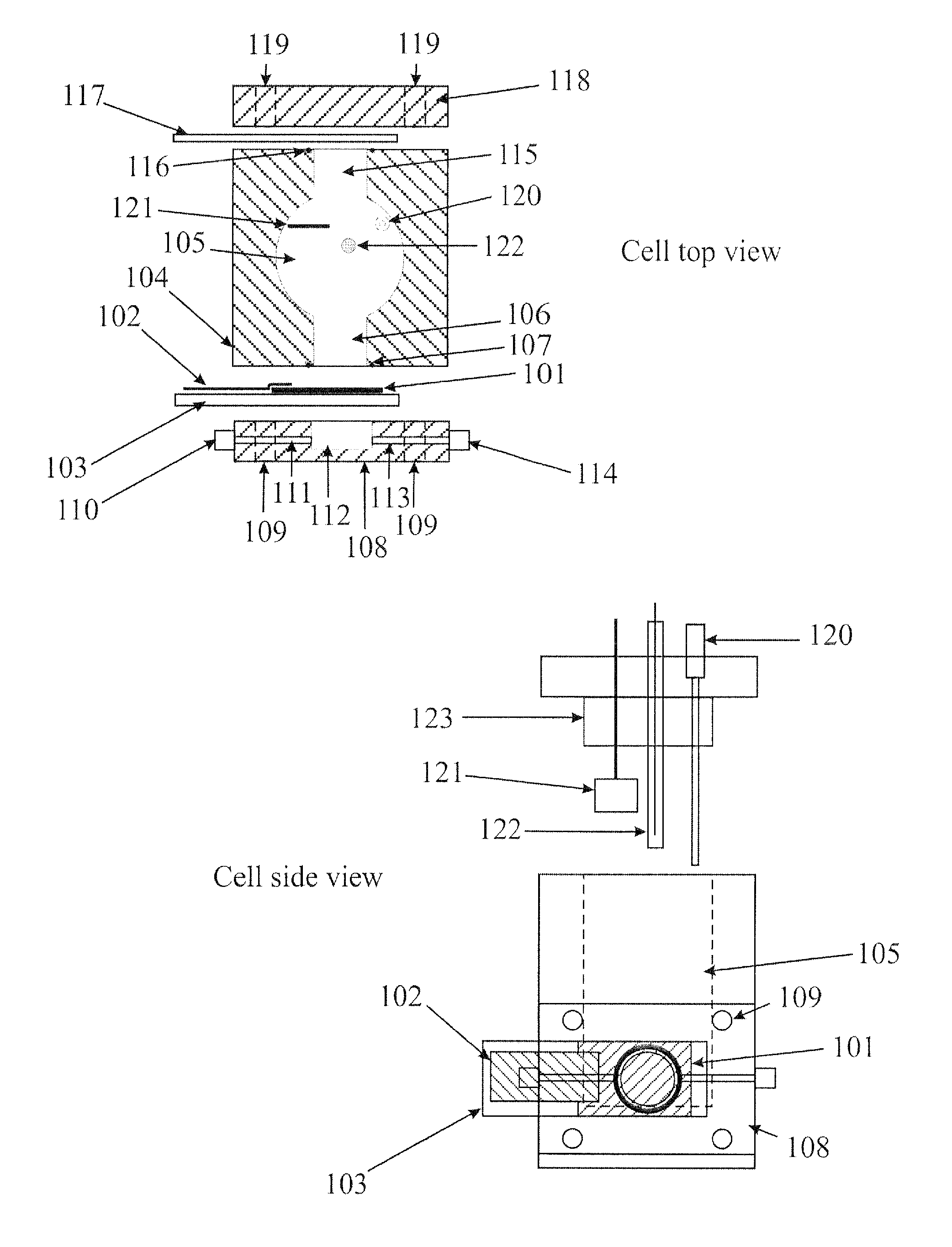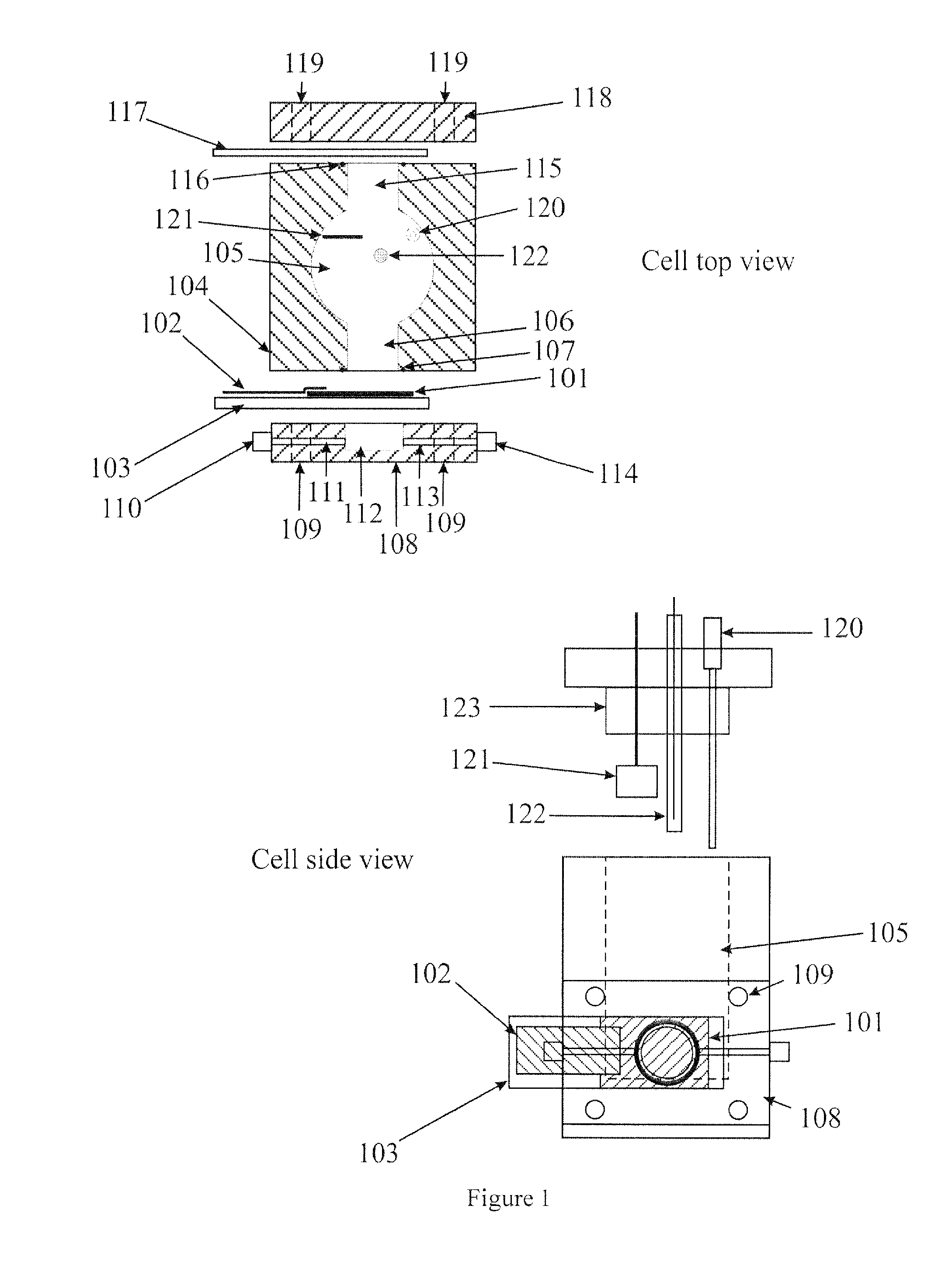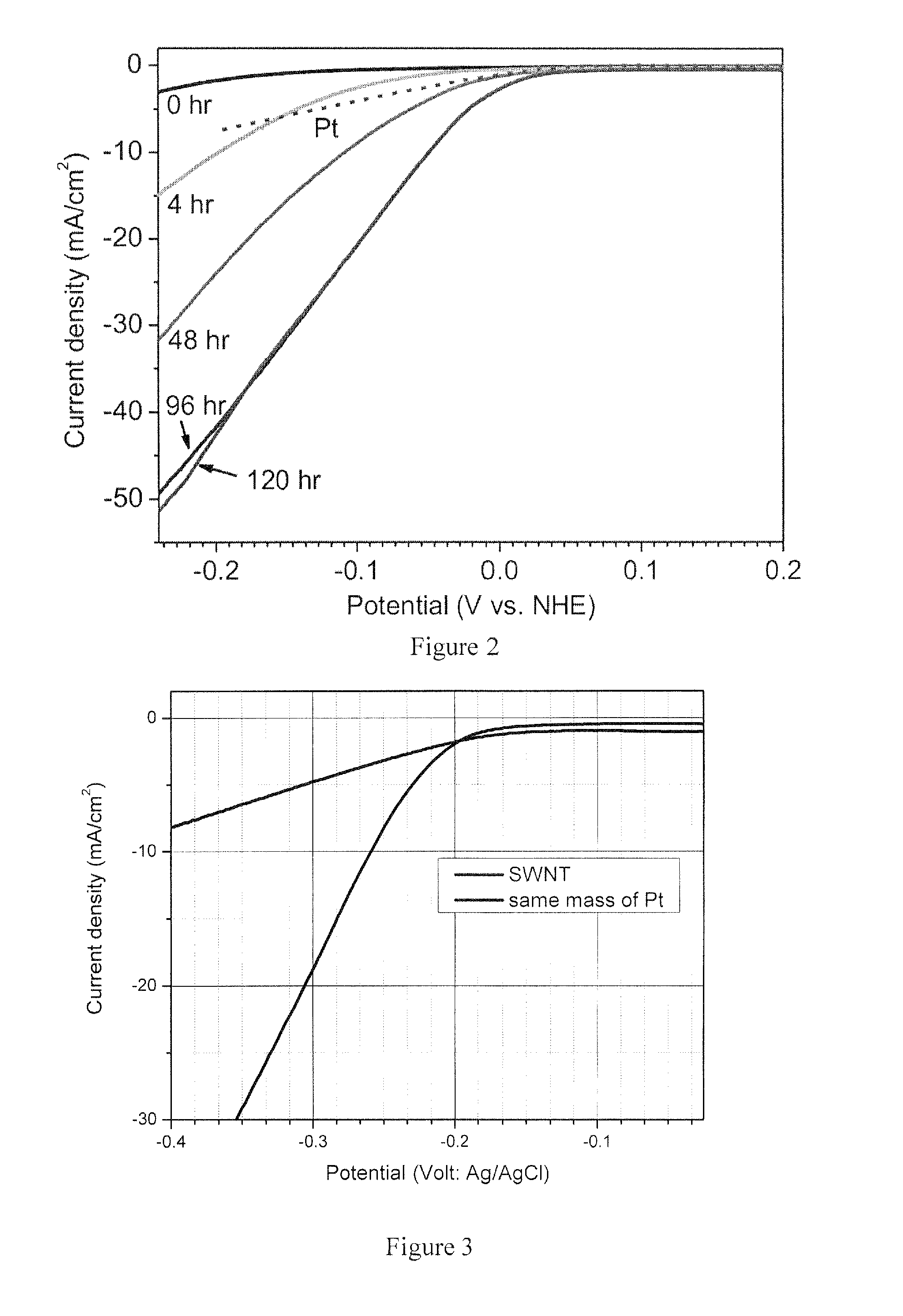Hydrogen oxidation and generation over carbon films
a technology of carbon film and hydrogen oxidation, which is applied in the direction of electrochemical generators, cell components, energy input, etc., can solve the problems of platinum being of insufficient supply, noble metal electrodes often exhibit performance degradation with time, and energy demand does not vary
- Summary
- Abstract
- Description
- Claims
- Application Information
AI Technical Summary
Benefits of technology
Problems solved by technology
Method used
Image
Examples
Embodiment Construction
[0030]It has been discovered that by exposing carbon materials, where at least portions thereof consist of more than 99% sp2 hybridized carbons, to acids that are intercalants of graphite while undergoing low voltage cathodic cycling, form carbon materials that are highly active as HER and HOR electrodes that initiate at near zero overpotentials. These electrodes comprising acid treated carbon materials display activities that can exceed the activity of the best known non-precious metal catalysts for HER and HOR. The high activity for HER persists in pH neutral water and in sea water. Although most of the disclosure herein is directed to exemplary embodiments employing single wall carbon nanotubes (SWNTs), in embodiments of the invention, other carbon materials consisting of more than 99% sp2 bonded carbons, such as highly ordered pyrolytic graphite and sintered microcrystalline graphite, can be included in the effective catalysts towards HER and HOR, which display high activity and...
PUM
| Property | Measurement | Unit |
|---|---|---|
| Fraction | aaaaa | aaaaa |
| Thickness | aaaaa | aaaaa |
| Thickness | aaaaa | aaaaa |
Abstract
Description
Claims
Application Information
 Login to View More
Login to View More - R&D
- Intellectual Property
- Life Sciences
- Materials
- Tech Scout
- Unparalleled Data Quality
- Higher Quality Content
- 60% Fewer Hallucinations
Browse by: Latest US Patents, China's latest patents, Technical Efficacy Thesaurus, Application Domain, Technology Topic, Popular Technical Reports.
© 2025 PatSnap. All rights reserved.Legal|Privacy policy|Modern Slavery Act Transparency Statement|Sitemap|About US| Contact US: help@patsnap.com



